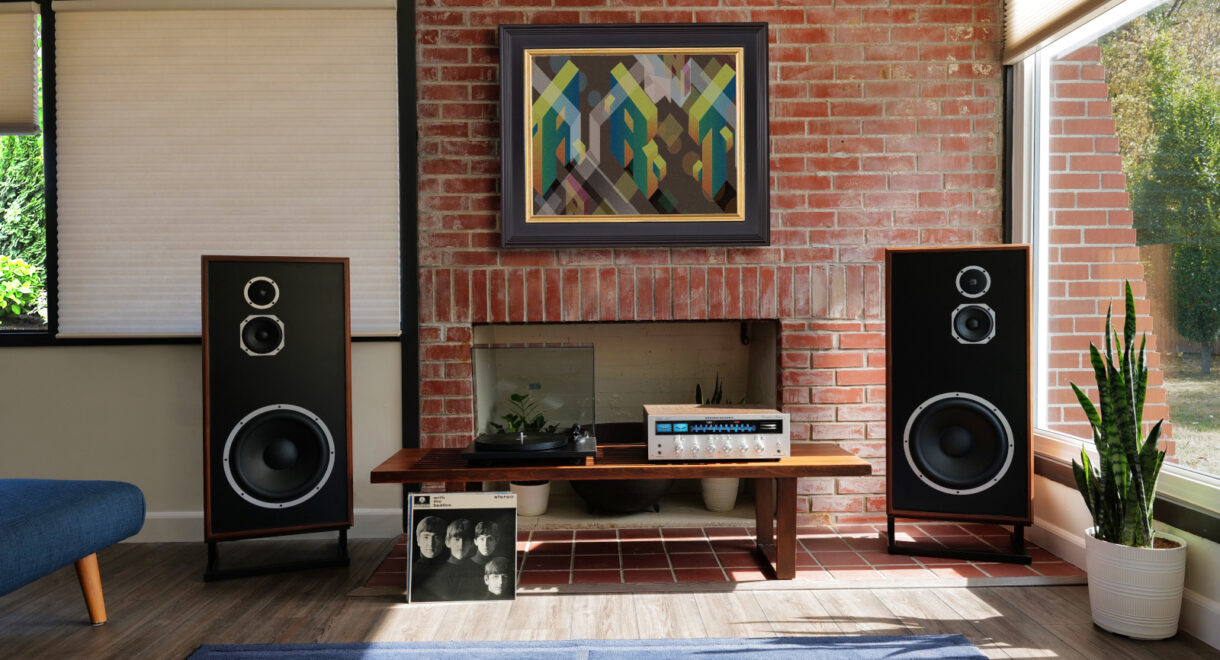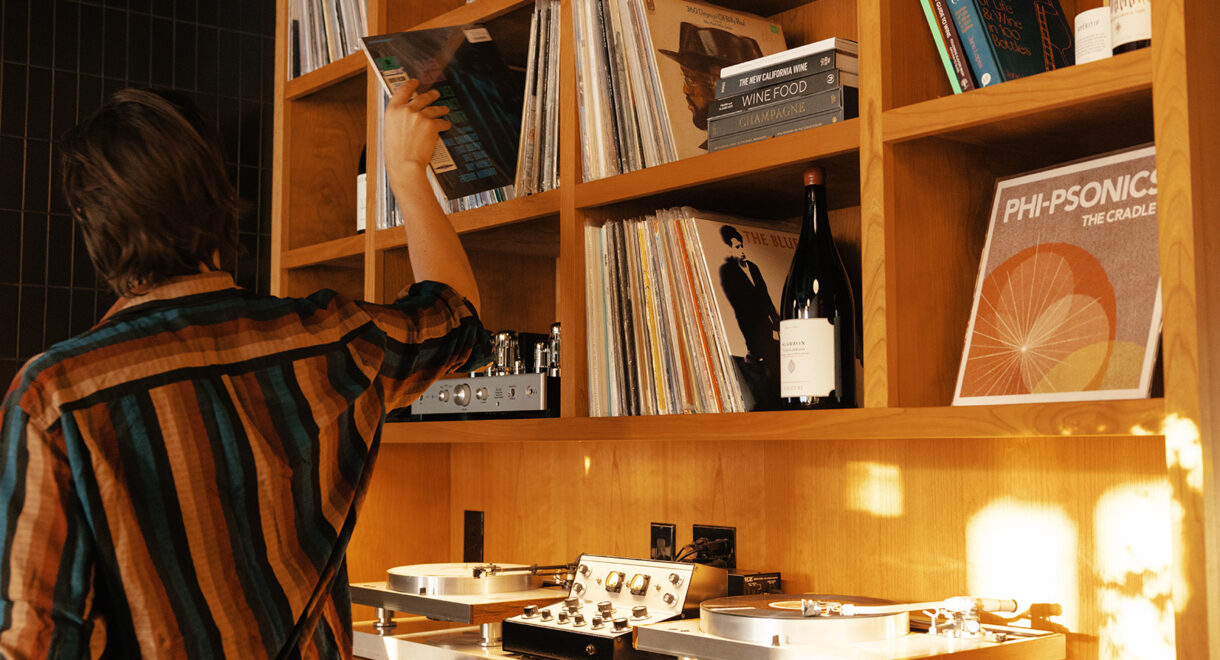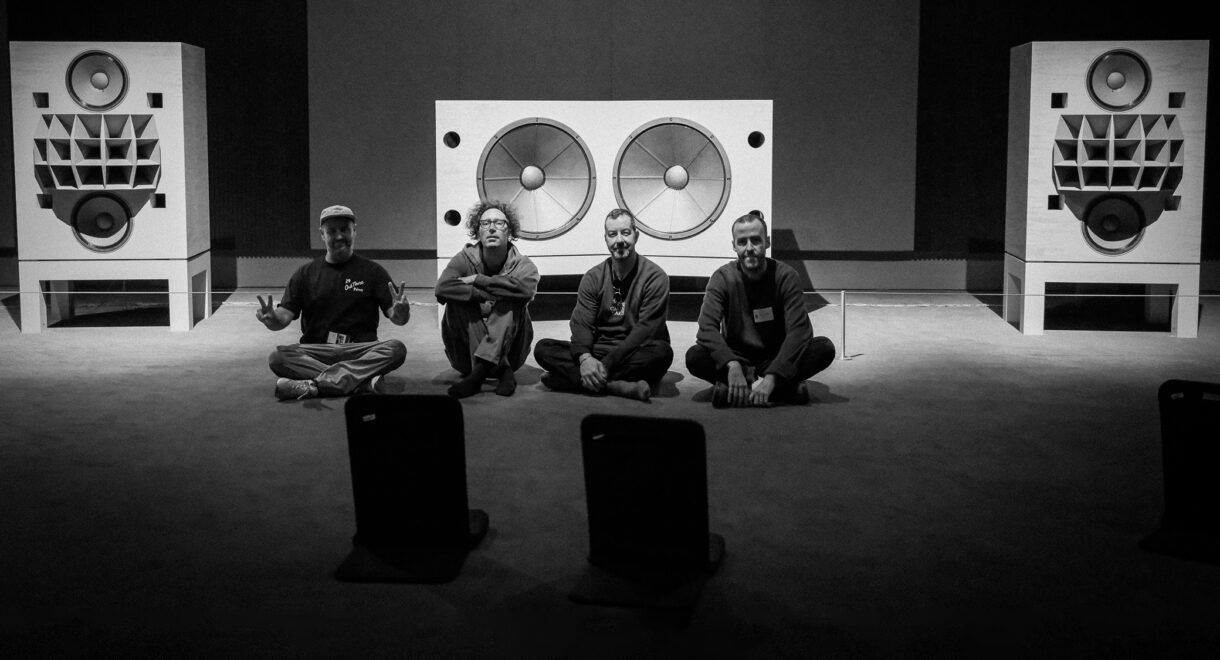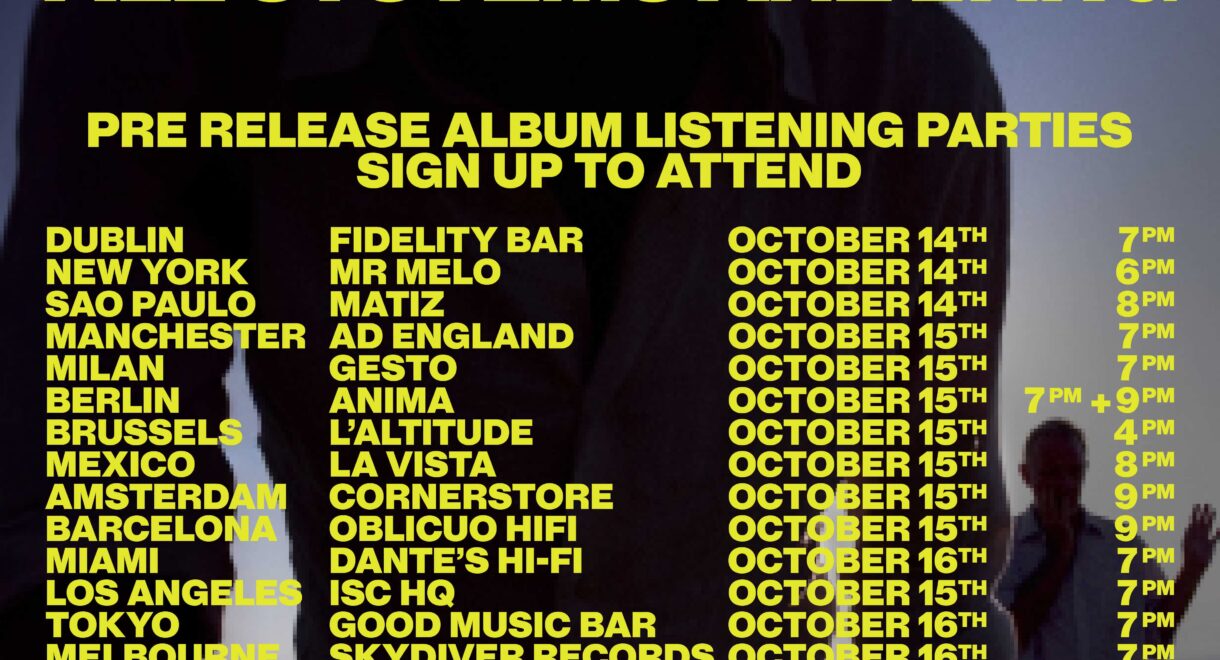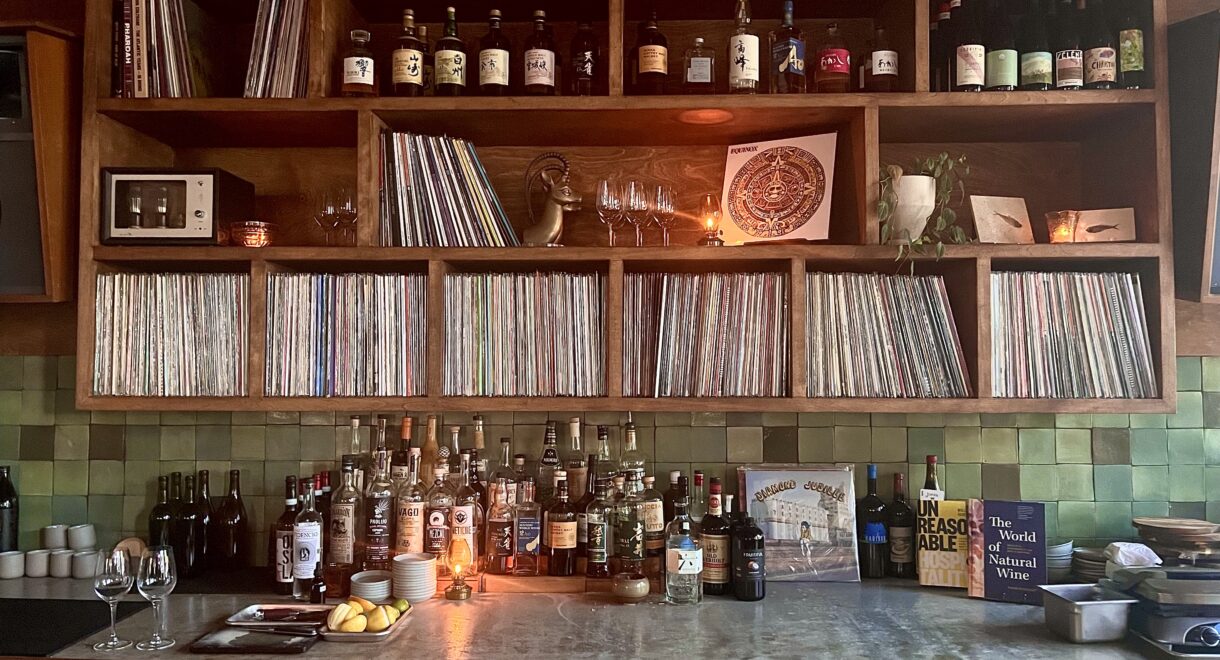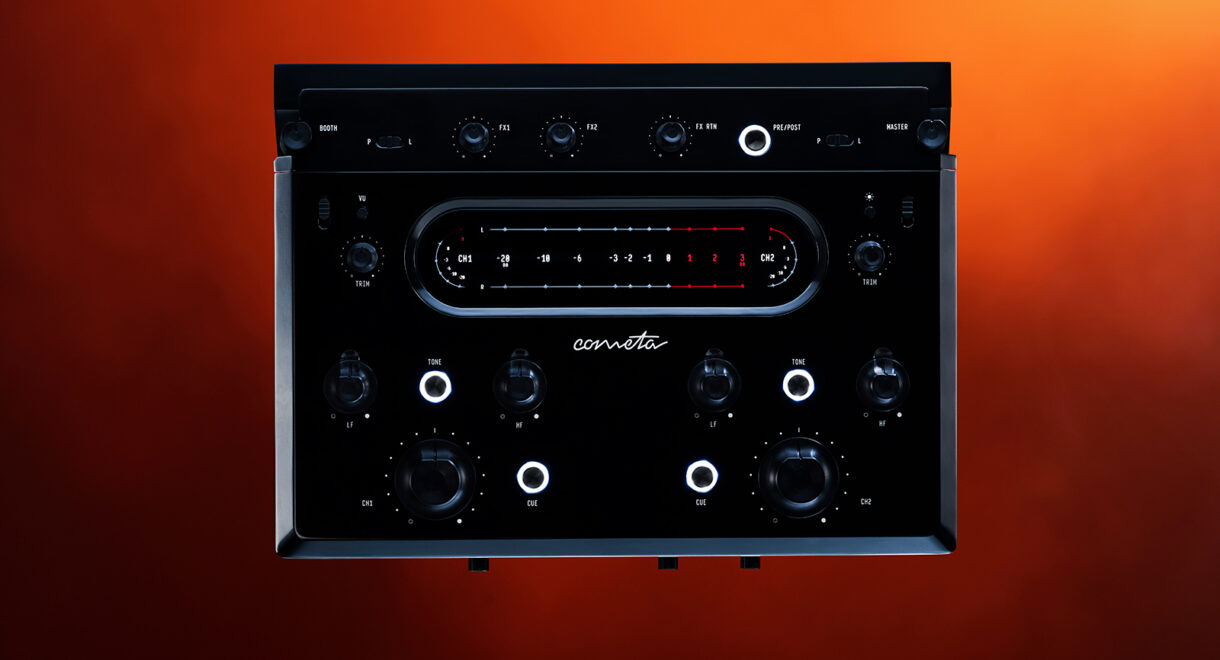November 20th, hear the new KLH Model Seven speakers at a curated listening session at The Wallis. As part of our ongoing focus on hi-fi equipment from the […]
The Big Romance & Fidelity Studio: “A Warm Hug of a Space” in Dublin

Meticulous acoustic treatment and custom-built sound systems at two beloved Dublin audiophile spaces.
Dublin, Ireland: The birthplace of Sinead O’Connor, My Bloody Valentine, Phil Lynott and Thin Lizzy, as well as a recent wave of left-field artists from the dreamy electronic folk of Maria Somerville to the experimental kraut of Morgan Buckley and the Wah Wah Wino crew to the wide-ranging electronic sounds of wherethetimegoes. The lush Emerald Isle has long had a rich history of indie, folk, and electronic music, and it’s no surprise that in recent years, listening bar and hi-fi culture have made a home there as well.
The Big Romance and Fidelity Bar & Studio are two new audiophile spaces founded by David Parle and Steve Manning. Drawing from decades of experience promoting events, Parle and Manning have created a pair of beloved destinations for music lovers across Dublin who are interested in a more intimate and personal nightlife experience, somewhere between a DJ bar and a club. At The Big Romance, bartenders play vinyl only selections from the in-house collection as well as their personal favorites, while Fidelity Bar & Studio operates as a restaurant during the day and shifts into a listening room and dance floor by night featuring some of the best DJ’s from around the world (previous nights have featured Shanti Celeste, Hunee, Objekt, Leon Vynehall, and others).
Next month, In Sheep’s Clothing will present a listening party at Fidelity Studio celebrating Westerman’s latest album A Jackal’s Wedding. Part of our listening bar network initiative, the event will feature a full-playback of the album prior to its official release as well as a Q&A with Westerman and journalist Niall Byrne. RSVP to the global listening sessions in Dublin, New York, Milan, Los Angeles, and London here.
To learn more about The Big Romance and Fidelity Bar & Studio, we spoke to David Parle and Steve Manning about their beginnings, approach to curation, sound systems, and more!
Hi Steve and David. Great to be connected. To start, can you share a bit about yourselves and your background?
David: I’ve been a music promoter doing events since 2005 working for different festivals and venues. About twelve years ago, Steve and I started working together on a promotions company. We always wanted to eventually have our own music-forward space. Steve comes from a little bit more of a DJ background than me.
Steve: I lived in the UK in the late ’90s to early 2000s, and then came back to Ireland. I was DJing and setting up my own events and parties. I met Dave because he was the programmer for one of the venues that we were hoping to host events at. There was a gap for Saturday nights so we started doing a regular party. That moved to different venues over the years and then became a bit more one-off as we moved into the venue phase.
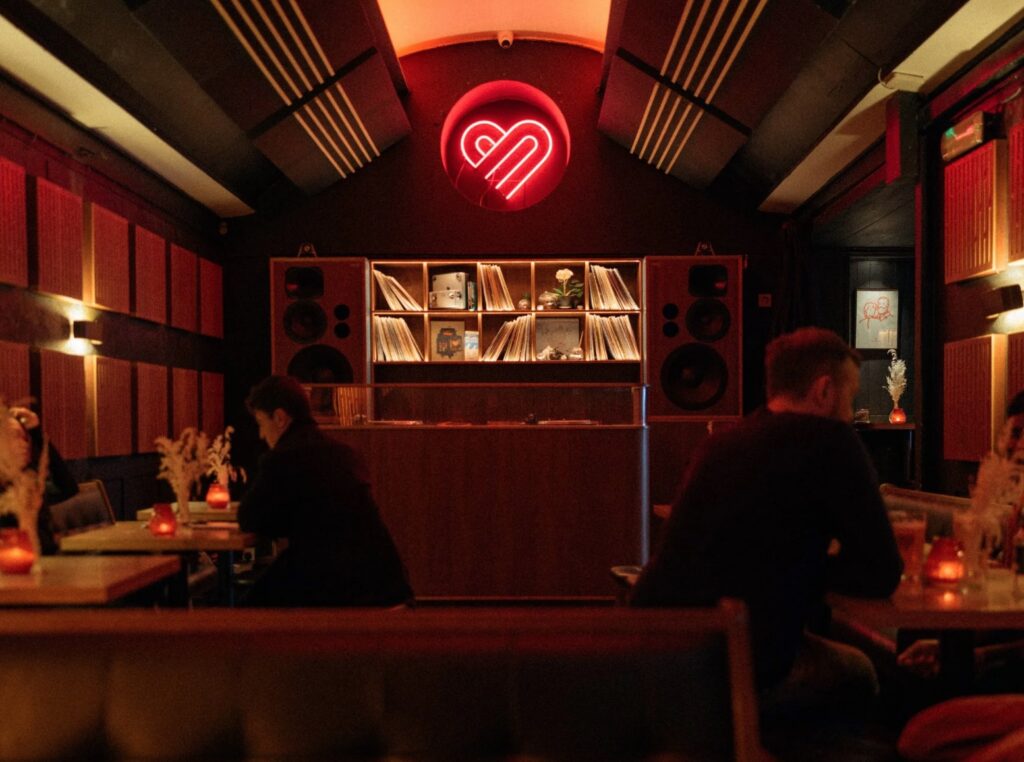
“We always looked at music first, then drinks, then everything else. I think people liked that because it was probably something that was missing.”
Your first venue is called The Big Romance. When did that open and what was the inspiration for that space?
S: The Big Romance opened in November 2018. I suppose we were lucky in that we had the vision first before we had space. David had been to Japan. We were both big vinyl collectors and into good sound. As Dave alluded to, we’ve worked in a lot of spaces where you’re trying to convince someone of the benefits of great lighting or great sound. At somebody else’s venue they might go, “Bottom line is, I don’t really need to do this” and they don’t have that vision. With the idea of listening bars, obviously it’s been big in Japanese culture, but then you started to see it in London with Spiritland and Brilliant Corners. We felt this was interesting, but we wanted to do it our own way. Then in 2018 a space became available. We had no prior experience, and jumped in.
D: I think for us, it was about having a place that’s music forward and finding the right way to do it that’s also true to us. You take a bit of inspiration from places, but then do it your way. The Big Romance is not in a very popular high-end part of town. It’s more like a dive bar meets a listening space. That’s more us. It’s more who we are. We wanted to be open to all and not super exclusive or premium. We just wanted to have a really full and open space. That’s the foundation that we’ve built on.
You mentioned traveling to a few listening bars in Japan. Were there any specific places you loved and looked to for references?
D: I went to JBS (Jazz Blues Soul) when I was in Tokyo. The main takeaway and experience was just seeing records everywhere. It’s unavoidable that music is at the forefront of people’s minds when they’re in there. You can see people are really looking to hear what’s playing now and what’s going on next? They’d talk about the records, have a look through, and maybe try to suggest things to the barman. Invariably he’d say no, but it just pushed the conversation. That’s a great space. I thought, “What do I like to be surrounded by and talking to people about?” It’s music. “What would I want in a space?” I want people to be able to sit there and really feel immersed in that. There was nothing particularly physical about the space per se, but it was really just the atmosphere that was created. I thought it’d be amazing to do this back home.
Listening bars were obviously still quite a new thing in 2018. What was the early reaction to this new type of music-forward space?
S: When you’re in a new space, you get a lot of first-time customers thinking, “What’s this all about?” I think people really did enjoy the location, and the fact that it felt very independent. With where we had our DJ booth set up, it felt like being in someone’s living room. There was a big buzz of it being something different. A lot of times, owners of space have been a bit faceless, whereas at The Big Romance it was very much like, “We’re here and this is our record collection.” It was very DIY. All our staff were new. People embraced it.
We’d also put our own slant into what it is with staff playing music, embracing their ideas, trying lots of different things, and any music-related ideas somebody would have like, “I want to play Pink Floyd all night long.” We would embrace that. We were also able to get a cohort of selectors with really great collections that maybe hadn’t DJ’d a club before. They were able to come in and play without having any pressure of making people dance or bringing this many people. There were no caveats other than to get to play your music collection. Everything kind of just came from that. We always looked at music first, then drinks, then everything else. I think people liked that because it was probably something that was missing. There definitely hadn’t been anything like it before we started.
D: I think it also became more of a party space from the start than we had initially expected. People were looking for somewhere that isn’t the club where they can dance, have a proper night out, and go home a little bit earlier, but still have that experience. That was a bit of an exciting surprise to us. Then it became, “How do we accommodate that along with the more discerning listening stuff?” We definitely learned a lot straight away about acoustics. We opened the place on a really small budget. It was very DIY, and I do think people appreciated that, but it also meant that we had to develop it as we went on. In the first year or two, we were constantly making tweaks on everything because it was very raw initially. These days a lot of people come in and spend a lot of money outfitting a new space, but they’re missing the soul and the essence. I think that’s the most important piece. People connect with that, and you just try and grow with them.
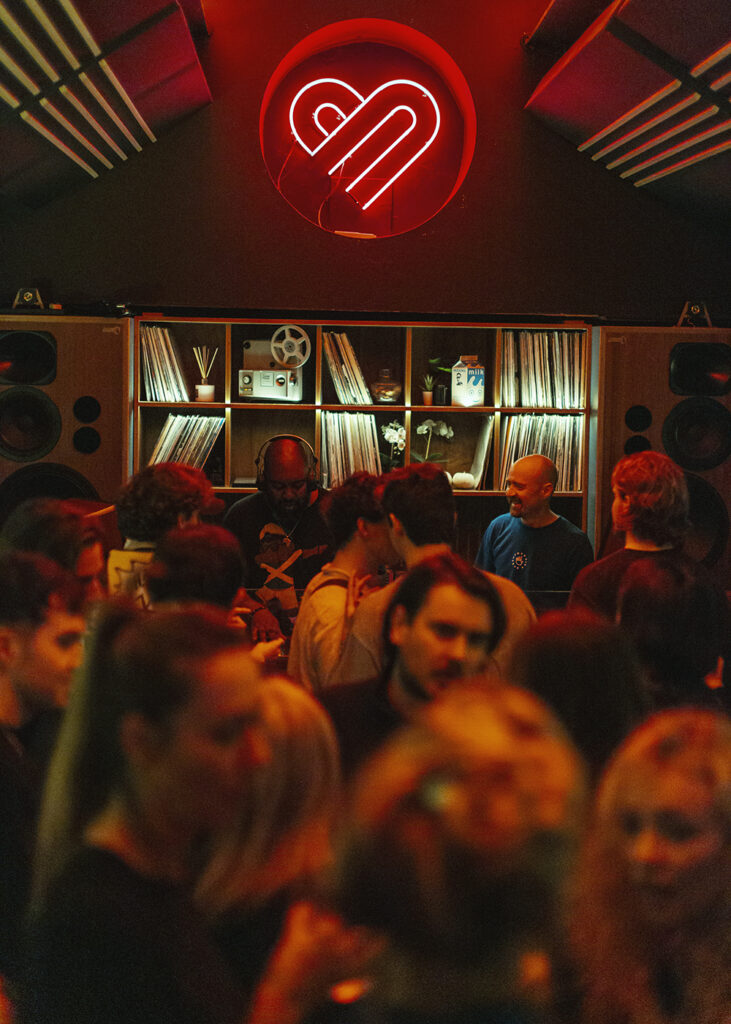
“We knew from the start that we’d need to put in as much sound treatment as we can in order for people to be able to talk freely and be comfortable, while also playing these records for everyone to enjoy and listen to as well.”
You mentioned the space turning into more of a party early on. I’m always curious about the adaptations that are made when the listening bar concept comes to other places around the world. You now run two spaces: The Big Romance and Fidelity Studio. Can you talk about the intricacies of each space?
S: With the Fidelity project, we had an opportunity in a really great space to be able to deliver things that we couldn’t do at The Big Romance. It has a bigger dance floor space and a restaurant. The layout and the speakers all came first, which really transformed the space. It’s not a typical Irish design, and it’s very unique on that front. There are a lot of opportunities for programming within that. We had a Blood Orange listening party on a Monday, restaurant on a Wednesday, and then Hunee DJ-ing on a Friday. As you get older, a lot of it is about adapting to your own personal tastes of what you want or expect in a space.
You mentioned adaptations and not being able to replicate certain things from Japanese listening bars. I think it’s also about the culture of the people here. Irish people like to dance. People can get a bit more raucous in spaces as well. We’ve been able to tap into that and decide, “What kind of space is this? Is everybody going to sit in silence for an hour?” We did an Aphex Twin listening party where people were getting up and dancing. These things came very organically and it’s a cultural thing as well.
D: In comparing The Big Romance to Fidelity, they’re both music-forward and that’s always the first point. Fidelity isn’t vinyl-only, but The Big Romance is. The reason for that is just that we have our entire collection at The Big Romance. If we were to try to do that at Fidelity it would be inauthentic because we’d be buying a whole new collection and trying to force it in. At The Big Romance, that is our true collection that is there. Obviously, we top it off, and buy records as we go, but that’s what makes The Big Romance special. I guess we would say it’s a little bit more in the dive bar world, whereas with Fidelity, it’s a little more polished, has a lot more space, and a much bigger sound system. As Steve said, it means that we can do a lot more with events there. We’ve had Leon Vynehall, Motor City Drum Ensemble, Coco Maria, and lots of others play there. For us, it’s great to have that outlet with our backgrounds as promoters.
S: Another difference is that because it’s not vinyl-only, Dave, in particular, spends a lot of time on the playlists at Fidelity. We have DJ’s Wed-Sun, but it’s very important to us that it’s the right music at all times, and those playlists are updated and curated constantly. Whereas at The Big Romance, we encourage staff to dig deep into their collections. On Mondays and Tuesdays, it’s all staff picks. We top up the in-house collection ourselves, but a staff member may say, “I’d like to get a PJ Harvey album. Can you order it?” which is great because there’s no point in us having amazing jazz albums if the person working there plays hip-hop. It’s nice to have a balance. It’s much more authentic. Depending on who is working there, it might be a bit more indie-focused, which we think is great. Someone wants to play Queens of Stone Age or Idles. We’re not just a set bar where you only hear this certain type of music.
I heard that The Big Romance and Fidelity are both located in sort of interesting areas and that they’re destination locations? Can you talk about how that’s affected the way people interact with the spaces?
D: Both of them are close to the city center, but not in places where there’s tons of foot traffic. One of the things that we realized after opening is that what makes the space special is that everyone that comes there comes for that experience. They don’t really just stumble in off the street. We realized that actually this wouldn’t be the same or as special if it was in a really busy part of town where people didn’t appreciate what it is and were stumbling in just to get a few pints and leave. The really popular areas of town were beyond our budget, and that’s probably why we ended up where we did, but that’s the happy win from that. When you create a destination place, people really want to be there, and that’s what makes it lovely.
S: There have also been issues of regeneration in that area, and it’s slowly happening now. We were keen to do something new in that community. I think it’s great for people to discover different parts of their city, and not have all their cultural spaces in the same pockets. Geographically, we’re very close to the center, but historically, people wouldn’t have maybe gone onto that street or that part of town. We’ve been open seven years now, and have become more of an institution in that area. It’s taken time, but it’s good for people to see different neighborhoods, different spaces, different communities.
D: It’s also worth saying that the areas we’re in are actually really special too. Parnell Street, where The Big Romance is located, is just so multicultural and interesting. Even if it wasn’t a super trendy area, we knew there was something really special about it. Same with where Fidelity is, we knew the area well and knew that it’d be a great community to go into.
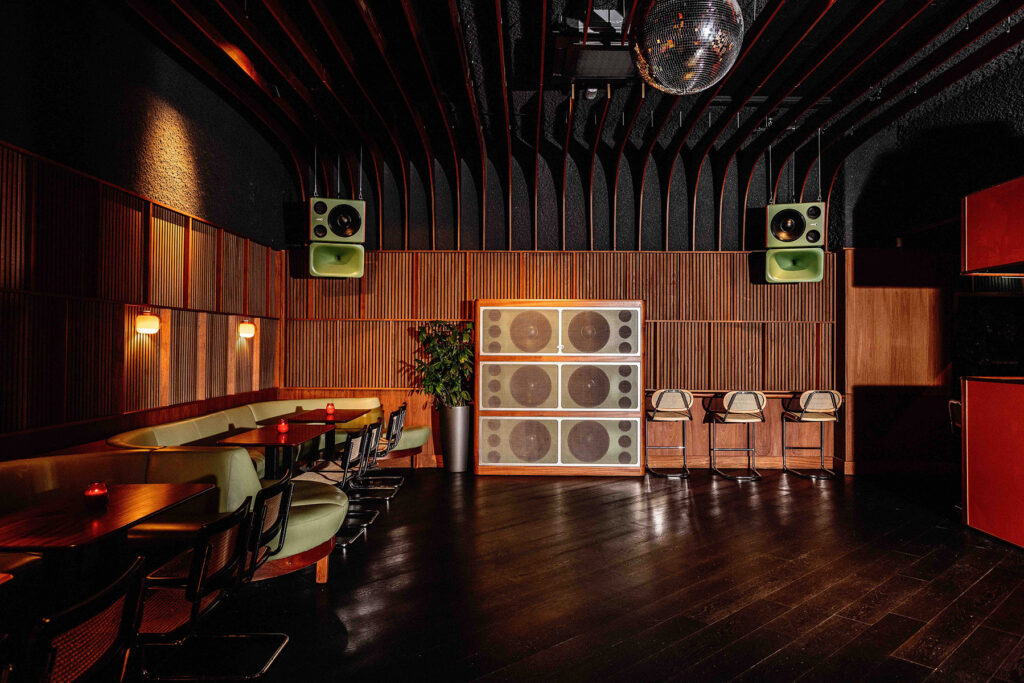
“When people have those creative ideas that maybe aren’t on our radar, an album listening, a film show, a comedy, or whatever it is, we can open up the space to them, and that builds up that community.”
What about the sound system at each space? You've worked with the same sound engineer for both The Big Romance and Fidelity?
D: Yeah Toby set up the sound systems at both spaces. We’re really lucky to work with Toby from the start. He’s a really great collaborator. The sound systems at both spaces are completely custom made. For example, in The Big Romance, we met up with him, walked into the space, and just talked about what we wanted to achieve, which was a living room hi-fi feel. The speakers were designed based on that idea and specific for the room and its size. We wanted that nice warm, complete hi-fi sound with not too much sub; we weren’t trying to create a club sound. We just wanted the sound to be as pure and perfect as it can be.
Then for Fidelity, again, it’s looking at the space and what can work. The bar area of Fidelity is unique because it’s a very long room. You want impact speakers, but in a really long space it’s hard to figure out how to orientate them. So Toby put in two pairs of hi-fi speakers. They’re both stereo with one pair at one end, and the other pair at the other end. They’re really beautiful and work well with the design of the space. Then there’s the bigger area, Fidelity Studio, that came a year and a half after we opened the other space. That’s a much bigger room and we wanted to create an event space that’s a restaurant, but can also be a club. Toby went a lot bigger with sub-stacks and just much bigger sound than you would even need for a room that size. Working with Toby has been a real pleasure. He thinks about what we need and builds specifically for that.
S: With both spaces, we were quite keen on dampening the room, making acoustic paneling, room treatments, etc. Great speakers don’t necessarily mean great sound; there’s a lot of tweaking to it. It’s a constant learning curve, but it’s very important to us. With Fidelity, we were working with a blank industrial space. The studio part had no roof and everything had to be built. We did have a blank canvas, so it was good to be able to bring in our vision and see it now in practice. The feedback we’ve had so far is that the sound in the room is incredible.
Also, with the DJ booth at Fidelity Studio, we didn’t want everybody going directly towards it, so we built it off to the side. People walk around it, but you’re actually facing the speakers instead of the booth. I think it makes for a bit more of an immersive experience rather than everyone looking at the DJ. When we do events, the space is more about celebrating sound.
I also heard that at The Big Romance, the room is treated in a way that allows for both conversation and listening. Can you talk about how you balance the two?
D: Look, we know Irish people are definitely very chatty (laughs). We want people to come in, be able to talk, and just enjoy themselves with friends. Again, one of the important aspects there is the room treatment. If you have a lot of people talking in a room with a lot of flat surfaces, the mid-high sounds are going to be bouncing around and fighting with the mid-highs that are coming from the sound system. We knew from the start that we’d need to put in as much sound treatment as we can in order for people to be able to talk freely and be comfortable, while also playing these records for everyone to enjoy and listen to as well. So the idea is you might be having a conversation, or you might really be listening, and that’s fine. If you’re someone who’s coming in, we’d hope that you can have a moment when you’re not talking, and you’re really absorbing what’s being played. We hope to always deliver that. Obviously, sometimes it’s really busy and loud, but certainly the ethos and the idea is: if you want to listen, you can; if you want to talk, go for it.
Lastly, Ireland is having a bit of a moment both musically and culturally. How do you approach supporting the local scene and Irish music?
D: I suppose in a sense, I’ve never fully thought it through that kind of prism. But for us, we always want to see what’s happening in the city and what’s exciting. We want to be really conscious of keeping our door open. The reason why I’m doing this is because I was a completely random person who reached out to a venue, and they let me put on a night when I was 20. I had no contacts or friends in the industry. They opened the door up to me. For us, we always want to keep the door open to the different people who are making music or doing things, and try our best to support them. We try to create little communities if we can and create environments where people meet each other and maybe go on to do interesting things. We have these spaces, and we have to do our best to open the doors.
S: Being event promoters before venue owners, we try not to be gatekeepers to stop people that are coming through. I think David and I are very positive when people come to us with an idea. Obviously, if somebody wants to play techno in The Big Romance, it’s not going to be the right fit, but most of the time, if people want to do something a little bit different, we’re able to do that. For instance, we had a film show recently, and we were able to say, “Hold on, maybe we could do this. We don’t have a screen, but we’ll get one. Let’s see how this works.” When people have those creative ideas that maybe aren’t on our radar, an album listening, a film show, a comedy, or whatever it is, we can open up the space to them, and that builds up that community.




